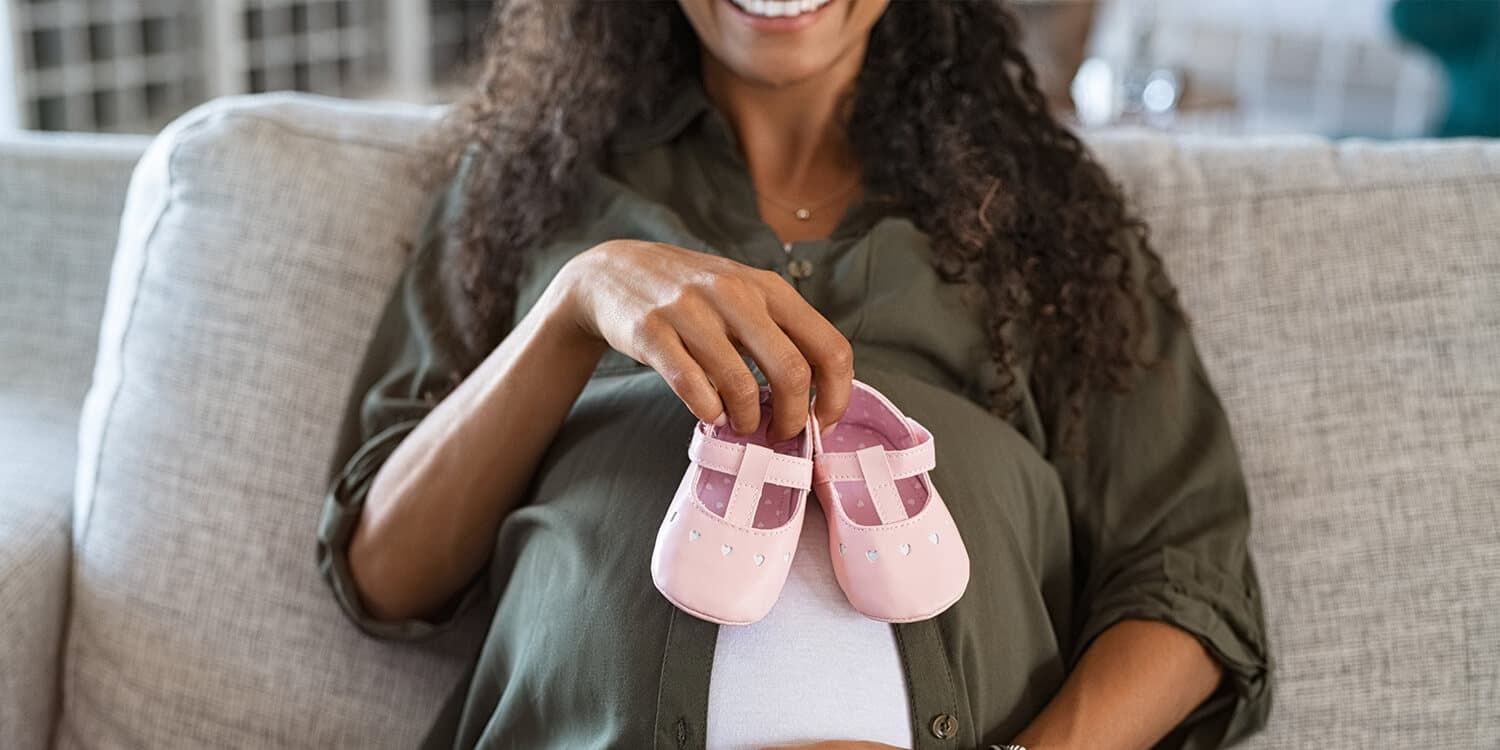Although you have now reached the ninth month, it is still a while until your due date. Pregnancy usually lasts for a total of 10 months, so you are now about halfway through the third trimester. Read on to find out what your baby is up to now and other important information now you are 33 weeks pregnant.
What's going on inside you at 33 weeks pregnant?
If you are expecting a boy, the testicles should now have dropped into the scrotum.
Your baby is now roughly the size of a pineapple.

It is now about time for your little one to position itself head-down ready for the birth. Prodromal contractions will help it to drop further down before labour starts.
It is important to pay attention to your baby’s movements, as feeling your baby move is a sign that they are well. You should continue to feel your baby move right up to the time you go into labour and during your labour too! Always trust your gut instinct, if you are worried or notice a change in the normal pattern of your baby’s movements, call your midwife or maternity unit.
And how do you feel at 33 weeks pregnant?
You may sometimes feel Braxton Hicks contractions as a pulling sensation in your back and pelvis. These contractions help drop your baby lower into the pelvis. As a result, your bump may change in shape. This change of position has a big benefit for you – you will be able to breathe a little more easily. However, pressure on the bladder can increase (although you've probably got used to that by now,or have you?!).
You should seek medical advice if you experience pain in your upper abdomen, bleeding, watery vaginal discharge or if you suddenly put on a lot of weight or start retaining a lot of fluid. These can be indications of pre-eclampsia of pregnancy. The risk of this is very low, but it never does any harm to have a check-up, just to be sure.
In the last few weeks, the list of pregnancy-related discomforts does not necessarily get any shorter – so pamper yourself as often as you can. Perhaps you have a partner or friend who can give you some hands-on pampering with a foot or back massage? Lucky you! For anyone else, you can at least call on professional hands to do the job. As the baby bump makes it difficult to lie on your back, a foot massage feels particularly good and relieves you of tired aching feet.
On the subject of massage: you can now start to massage the perineum (the tissue between the vagina and the anus), to prepare the vagina for the birth and reduce the risk of any perineal tears.
How do I massage my perineum to prepare for the birth?
- Wash your hands thoroughly to avoid bacterial infections.
- Next, place some oil (e.g. almond oil, olive oil or special perineum massage oil) on your finger.
- With a smooth, circular and stretching motion, use your fingers to massage the entrance to the vagina and the perineum area for a few minutes. This can feel like its pulling quite a lot, but it should not be overly painful – ultimately, there should be no damage to the tissue. If you are unsure about anything, ask your midwife’s or doctor's advice on how to proceed.
The aim of perineal massage is to make the skin more supple and get used to the stretching feeling. If you are well prepared, you can relax before the birth – and the more at ease you feel, the better the birth experience!
Photo: Shutterstock




























